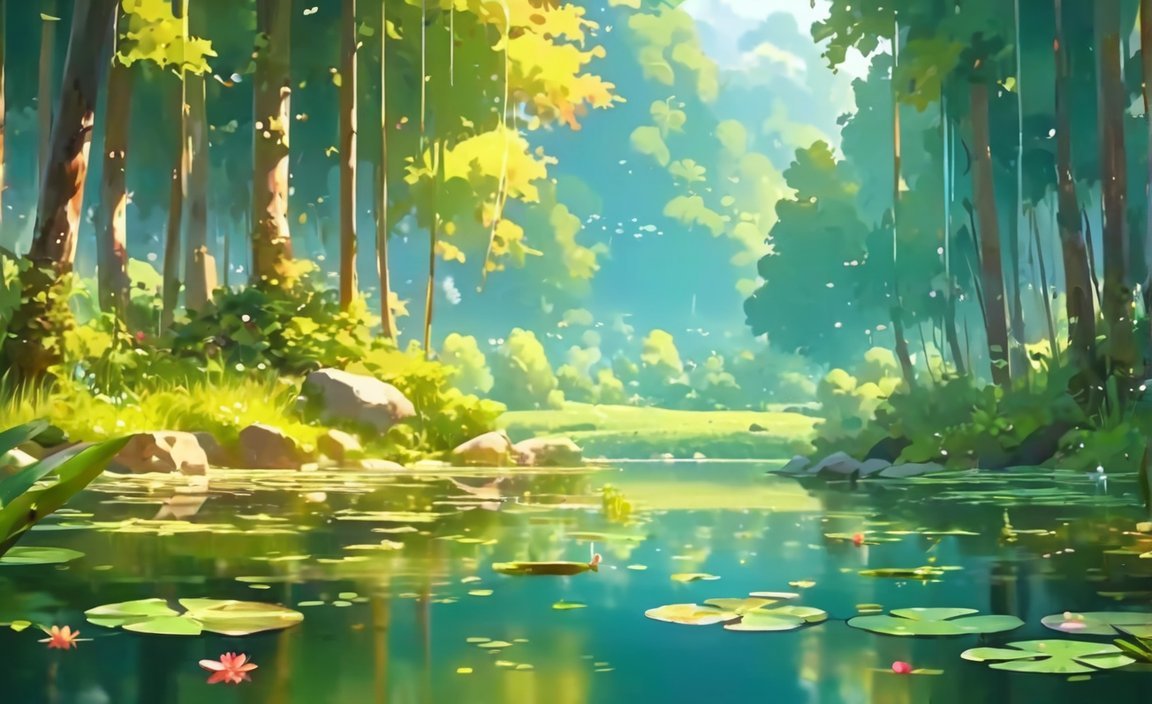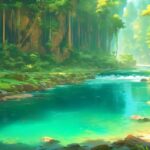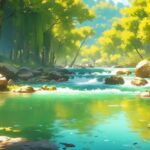Discover 10 intriguing facts about lakes and ponds, the wondrous bodies of water that serve as the lifeblood of our planet’s ecosystems. From their mesmerizing beauty to their vital ecological role, lakes and ponds captivate our imagination and hold a wealth of fascinating secrets. Join us on an enlightening journey as we unveil the hidden wonders of these remarkable watery landscapes.
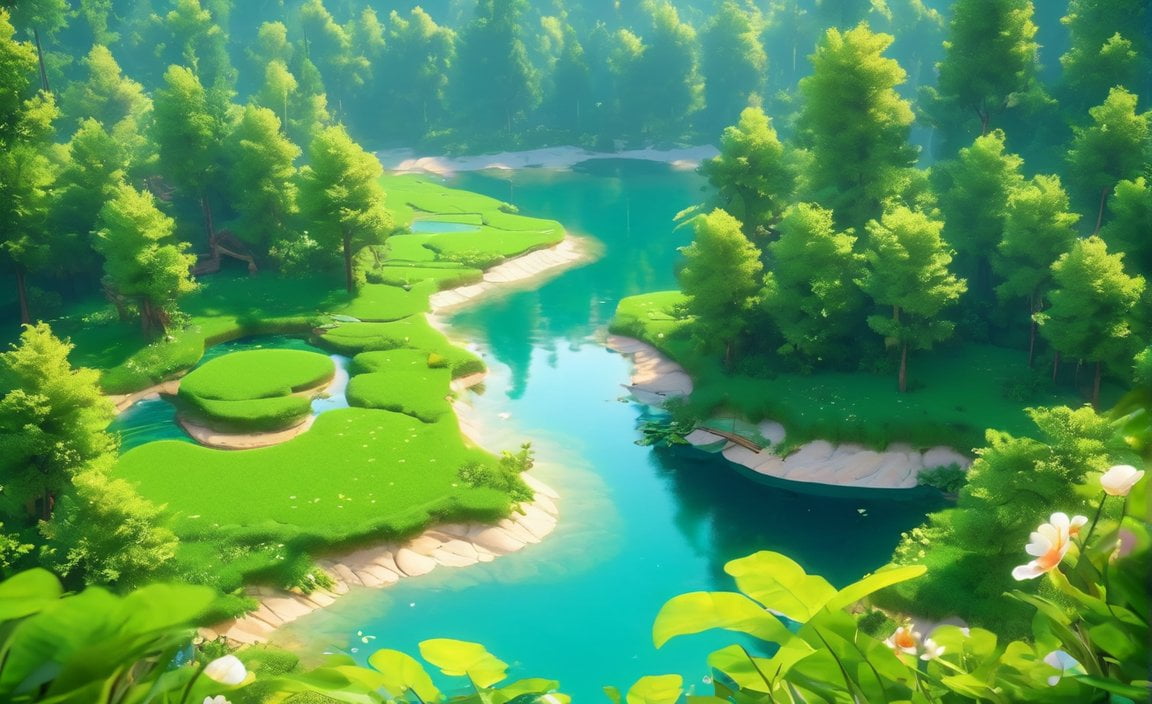
Key Takeaways:
- Lakes are isolated environments where unique and interesting animals and plants can evolve.
- Man-made lakes are called reservoirs.
- Lakes come in a wide range of sizes and shapes, from small ponds to massive bodies of water.
- The distinction between lakes and ponds is subjective and based on size.
- Healthy ponds support diverse wildlife.
- Ponds form in various ways.
- Ponds and lakes have a limited lifespan.
- There are different types of ponds with distinct characteristics.
- Ponds provide safe habitats for wildlife.
- Ponds hold historical significance.
10 Interesting Facts About Lakes and Ponds
Lakes and ponds are enchanting bodies of water that hold a wealth of natural wonders. From their diverse ecosystems to their stunning geological formations, these aquatic habitats never cease to captivate us. Here are 10 intriguing facts that shed light on the beauty and importance of lakes and ponds:
1. Isolated Sanctuaries of Evolution
Lakes are often isolated places where interesting animals and plants may evolve. Removed from the influences of larger bodies of water, lakes provide unique ecological niches that can lead to the emergence of new species or subspecies.
2. Man-Made Water Reservoirs
Man-made lakes are known as reservoirs. Although they may lack the natural character of other lakes, these reservoirs serve important purposes, such as providing water storage for human consumption, irrigation, or hydroelectric power.
3. Varied in Size and Shape
Lakes vary greatly in size and shape, ranging from tiny ponds covering only a few square meters to vast expanses spanning thousands of square kilometers. Each lake possesses its own distinct characteristics, dictated by factors such as its depth, location, and surrounding geology.
4. The Relative Nature of Lakes and Ponds
Contrary to popular belief, there are no official or scientific differences between lakes and ponds. The distinction lies in their size, which is purely relative. A body of water may be considered a pond in one region but a lake in another, highlighting the subjectivity of these classifications.
5. Thriving Ecosystems
Healthy ponds boast an array of wildlife, from tiny aquatic organisms to waterfowl and amphibians. These ecosystems are teeming with life, interconnected through a delicate balance of predator-prey relationships and symbiotic interactions.
6. Unique Formation Stories
Ponds are formed in fascinating ways. They can be remnants of glaciers, depressions created by geological events, or even sinkholes formed by the dissolution of soluble rocks. Each pond bears the imprint of its geological history, adding to the allure of these shimmering bodies of water.
7. The Transience of Ponds and Lakes
While lakes and ponds may seem timeless, they don’t last forever. Over time, natural processes like erosion and sedimentation can cause ponds to fill in and transform into terrestrial habitats. Similarly, lakes may become shallower or disappear altogether, leaving behind remnants of their former majesty.
8. Diverse Types of Ponds
There are many different types of ponds, each with its own distinctive features and ecological characteristics. From vernal pools that appear and disappear with seasonal changes to peatlands rich in organic matter, these variations provide a fascinating tapestry of diversity within the world of ponds.
9. Havens for Wildlife
Ponds play a crucial role in supporting wildlife by providing safe havens for various species. Fish, amphibians, and water-dwelling insects find refuge in these sheltered waters, where they can reproduce, find food, and seek protection from predators.
10. Historical Significance
Ponds hold a significant place in history. They have been central to human civilizations throughout time, serving as sources of drinking water, locations for settlements, and settings for cultural and recreational activities. Ponds have witnessed the ebb and flow of human history, making them repositories of collective memory.
In conclusion, lakes and ponds are not just bodies of water; they are intricate ecosystems woven into the fabric of our planet. Their biodiversity, geological diversity, and historical significance make them subjects of endless fascination. So next time you encounter a serene pond or a vast lake, take a moment to ponder the wonders they hold within their depths.
Here are some active internal links for you:
- 10 facts about Vatican City – Discover fascinating facts about Vatican City and its rich history and culture!
- 10 funny things about Canada – Prepare to be amused and entertained with these hilarious anecdotes about Canada!
- 10 interesting facts about Indian culture – Dive into the diverse and vibrant world of Indian culture with these intriguing facts!
- 10 interesting facts about Indus Valley Civilization – Uncover the mysteries of the ancient Indus Valley Civilization through these fascinating facts!
- 10 interesting facts about Lake Ontario – Delve into the wonders of Lake Ontario with these captivating facts about this majestic body of water!
- 10 interesting facts about Ontario – Get to know Ontario better by exploring these amazing facts about the province!
Feel free to click on any of the links to explore more about these captivating topics!
Ponds are smaller and more shallow than lakes, often formed by natural or man-made means.
Ponds are fascinating bodies of water that captivate us with their beauty and intrigue. They are distinct from lakes in their size and depth, carved out by natural or man-made forces. Let’s explore ten intriguing facts about ponds and the unique ecosystems they support.
1. Ponds: Smaller and Shallower
Ponds are smaller and shallower than lakes, making them distinct bodies of water. While there is no official criteria for distinguishing a pond from a lake, ponds are generally considered to be less than 5 hectares in area and less than 5 meters in depth, with less than 30% emergent vegetation. These characteristics contribute to the unique ecological characteristics of ponds.
2. Natural or Man-made Origins
Ponds can be formed through natural geological processes or by human intervention. Natural pond formation can occur in volcanic craters or areas where glaciers have melted, creating small basins that fill with water. On the other hand, man-made ponds are often created by constructing barriers, such as dams or embankments, which trap water and create a pond-like environment.
3. Diversity of Origins
Ponds have a diverse range of origins, giving them unique characteristics. Some ponds may form as a result of floods or be nestled in depressions created by geological processes. Others are the result of human activities, such as the creation of agricultural or ornamental ponds. Regardless of their origin, ponds serve as important habitats for various plant and animal species.
4. Ecological Significance
Ponds play a vital role in supporting a diverse range of wildlife. Their shallow depths and ample sunlight create ideal conditions for the growth of aquatic plants and algae. These plants provide a habitat for a variety of organisms, including fish, insects, amphibians, and waterfowl. Ponds serve as important breeding grounds and nurseries for many species, contributing to the overall biodiversity of the ecosystem.
5. Unique Features
Ponds often have distinctive features that set them apart from lakes. One notable characteristic is the presence of plants growing from one side to the other, covering the entire bottom of the pond. This can create a visually appealing sight as the plants sway with the movement of the water. Additionally, ponds may have a high density of emergent vegetation, such as lily pads or cattails, which further enhance their charm.
6. Water Sources
Ponds can be fed by a variety of water sources. Some ponds receive water from underground springs, while others collect rainwater or runoff from surrounding landscapes. The constant inflow of water helps maintain the pond’s ecosystem by providing a fresh supply of nutrients and ensuring a steady water level.
7. Ever-Changing Nature
Ponds are dynamic ecosystems that undergo continuous changes. They are affected by seasonal variations, such as fluctuations in temperature, rainfall, and sunlight. These changes can influence the growth and productivity of plant and animal species within the pond, creating a dynamic and ever-evolving environment.
8. Valuable Water Reservoirs
Ponds serve as valuable water reservoirs, particularly in areas prone to drought or water scarcity. Their ability to store water can benefit nearby communities by providing a readily available source of water for agricultural, industrial, or recreational purposes. Additionally, man-made ponds used for water storage can also generate hydroelectric power, further contributing to their significance.
9. Fragile Ecosystems
Ponds are delicate ecosystems that require careful management and protection. Human activities, such as pollution, urbanization, and the introduction of non-native species, can disrupt the balance of these ecosystems and harm the plants and animals that call them home. Conservation efforts are crucial to preserving the biodiversity and ecological integrity of ponds.
10. Role in Scientific Research
Ponds offer scientists a unique opportunity to study and understand various ecological processes. Their smaller size allows for detailed observations and measurements, making them ideal for scientific research. Studies conducted in ponds contribute to our knowledge of aquatic ecosystems, including their responses to environmental changes and the intricate relationships between different organisms.
Key Takeaways:
– Ponds are smaller and shallower bodies of water compared to lakes, often measuring less than 5 hectares in area and less than 5 meters in depth.
– They can be formed naturally through geological processes or created artificially by humans.
– Ponds have a diverse range of origins, including volcanic craters, glacial meltwater basins, and anthropogenic activities.
– These bodies of water are ecologically significant, supporting a wide array of plant and animal species.
– Ponds often display unique features, such as plants growing from one side to the other and high densities of emergent vegetation.
– They can be fed by springs, rainwater, or runoff, ensuring a continuous water supply.
– Ponds are dynamic ecosystems that undergo seasonal variations and play important roles as water reservoirs.
– Conservation efforts are necessary to protect the fragile ecosystems of ponds from human-induced threats.
– Ponds offer valuable opportunities for scientific research due to their manageable size and intricate ecological processes.
Sources:
1. David C. Richardson. “A functional definition to distinguish ponds from lakes and wetlands.” Nature.
2. “Pond – Wikipedia.”
Lakes and Ponds Support a Wide Range of Ecosystems and Provide Habitats for Various Plant and Animal Species.
From their serene beauty to their vital role in supporting biodiversity, lakes and ponds have captivated our curiosity for centuries. These freshwater habitats are home to an array of fascinating species and play a significant role in sustaining the delicate balance of our planet’s ecosystems. Let’s dive into the enchanting world of lakes and ponds and discover 10 intriguing facts that highlight their importance and wonders.
Fact 1: Lakes and ponds nurture diverse ecosystems
Lakes and ponds are more than just bodies of water; they serve as thriving ecosystems that support a wide range of plant and animal life. From microscopic organisms like algae and plankton to aquatic plants, fish, amphibians, and waterfowl, these habitats offer a complex web of life. Source: Nature – Ponds and Lakes: A Journey Through the Life Aquatic
Fact 2: Ponds are crucial for protecting biodiversity
Ponds hold immense value in conserving biodiversity. They support two-thirds of all freshwater species and provide vital habitats for water-loving creatures. With their smaller size and abundant vegetation, ponds facilitate interactions between various organisms, promoting species diversity and playing a key role in preserving our planet’s rich tapestry of life. Source: WWT – Ponds
Fact 3: Ponds are biodiversity hotspots
Surprisingly, ponds can host more species and possess higher conservation value compared to larger lakes of the same total area. The combination of factors such as shallower water, seasonal variations, and diverse vegetation contribute to their incredible biodiversity. If you’re looking for a hub of life, don’t underestimate the captivating power of a pond. Source: Springer – Ponds in a landscape context
Fact 4: Lakes and ponds contribute to aquatic conservation
Recognizing the interconnectedness of aquatic ecosystems, it is important to conserve both lakes and ponds. These integrated systems work together to preserve aquatic landscapes and protect the delicate balance of our planet’s natural heritage. By safeguarding these habitats, we ensure the well-being of countless species and maintain the ecological harmony of our world. Source: Springer – Ponds in a landscape context
Fact 5: Ponds vary in size and characteristics
Ponds come in all shapes and sizes, making them distinctive and fascinating. Ranging from small ponds covering less than 5 hectares to larger bodies of water, these habitats offer a diverse range of features. Whether you encounter a charming garden pond or a vast pond nestled amidst forests, each showcases its unique traits and contributes to the complexity of our natural world. Source: WWT – Ponds
Fact 6: Ponds provide vital resources and habitats
Ponds, whether natural or man-made, play an essential role in nurturing both aquatic and terrestrial organisms. They offer a reliable water source, create a haven for countless species, and provide refuge for creatures such as frogs, dragonflies, and water birds. These vital resources sustain life and create a thriving ecosystem within their peaceful waters. Source: Nature – Ponds and Lakes: A Journey Through the Life Aquatic
Fact 7: Nutrient disruption can impact pond ecosystems
While ponds and lakes are resilient, they are susceptible to disruptions caused by excessive nutrients, such as fertilizers and sewage. These nutrients contribute to the growth of algae, which can harm the delicate balance of the ecosystem. It is essential to protect these habitats from pollution and maintain their integrity to ensure the survival of their diverse inhabitants. Source: Let’s Talk Science – Pond Ecosystem
Fact 8: Ponds harbor rare and endangered species
The cumulative biodiversity of ponds often surpasses that of lakes and rivers. These enchanting habitats provide a home for many rare and endangered aquatic species. By preserving ponds, we safeguard these unique species and contribute to the conservation efforts aimed at protecting their delicate populations. Source: ESA Journals – Ponds support high beta diversity and increase gamma diversity of amphibians in an agricultural landscape
Fact 9: Lakes, rivers, and ponds hold remarkable biodiversity
Covering a mere 1% of Earth’s surface, lakes, rivers, and ponds are vibrant reservoirs of life. They are home to 10% of all animals and a staggering one-third of all vertebrates. These freshwater bodies host an astonishing array of species, illustrating the significance of these habitats in sustaining our planet’s rich biodiversity. Source: Springer – Ponds in a landscape context
Fact 10: Ponds provide critical benefits for humanity
Beyond their ecological importance, ponds offer invaluable services for humanity. Shallow lakes and ponds assist in regulating water flow, preventing floods, and acting as vital water reservoirs. They also contribute to provisioning services by supplying freshwater for various human uses. Appreciating the multiple benefits they provide is key to preserving these remarkable natural treasures. Source: Springer – Ponds in a landscape context
Key Takeaways:
- Lakes and ponds are essential freshwater habitats that support a diverse range of plant and animal life.
- Ponds play a crucial role in protecting biodiversity and often harbor more species compared to lakes.
- Conserving both lakes and ponds is vital to preserve aquatic landscapes and maintain ecological balance.
- Ponds vary in size, shape, and characteristics, adding to their uniqueness and charm.
- Ponds provide resources and habitats for both aquatic and terrestrial organisms.
- Protecting ponds from nutrient disruption ensures the well-being of their delicate ecosystems.
- Ponds often sustain rare and endangered species, highlighting their conservation value.
- Freshwater bodies like lakes, rivers, and ponds are home to a remarkable amount of biodiversity.
- Ponds offer critical benefits to humanity, such as regulating water flow and providing freshwater resources.
Nature – Ponds and Lakes: A Journey Through the Life Aquatic
WWT – Ponds
Citation Format: Source Title
[Lakes and Ponds: Fascinating Realities You Should Know]
Lakes and ponds play essential roles in the water cycle and have significant cultural and recreational value. These remarkable bodies of water are not only aesthetically pleasing but also contribute to the overall well-being of our planet. Join me as we dive into the intriguing facts about lakes and ponds, exploring their ecological importance and the wonders they hold.
Key Takeaways:
- Lakes and ponds are vital habitats for biodiversity, supporting a diverse range of species and contributing to the overall biodiversity of an ecosystem.
- These freshwater ecosystems provide essential resources and habitats for both aquatic and terrestrial organisms, ensuring the survival of numerous species.
- Ponds and pondscapes are not just beautiful; they also offer important ecosystem services, such as nutrient cycling, water purification, and carbon sequestration.
- Climate change adaptation is facilitated by lakes and ponds, as they provide refuge and habitats for species impacted by changing environmental conditions.
- Human benefits from lakes and ponds include the provision of drinking water, irrigation for agriculture, and recreational activities like fishing, boating, and bird watching.
- Conservation efforts are crucial for preserving the ecological function of pond ecosystems and the biodiversity they support.
- Despite their importance, ponds and pondscapes face challenges such as pollution, habitat loss, and invasive species, which require collaborative efforts from researchers, policymakers, and stakeholders to address.
- By recognizing and protecting the value of lakes and ponds, we can ensure their contribution to both nature and society.
Let’s explore ten intriguing facts about lakes and ponds:
1. Hidden Treasures of Biodiversity:
Lakes and ponds are hotspots for biodiversity, harboring an incredible variety of species. From microscopic organisms to large vertebrates, these aquatic ecosystems play a crucial role in maintaining the overall balance of life on Earth.
2. Ecosystem Services:
Beyond their beauty, lakes and ponds provide invaluable ecosystem services. They contribute to nutrient cycling, purify water, and even help capture carbon from the atmosphere. These services have far-reaching implications for the well-being of both wildlife and humans.
- Source: Nature: Ponds and Lakes: A Journey Through the Life Aquatic
3. Climate Change Champions:
As climate change intensifies, lakes and ponds play a crucial role in adaptation and mitigation efforts. They provide habitats for species impacted by environmental shifts and act as natural buffers against floods. Additionally, these bodies of water can sequester carbon, aiding in the fight against greenhouse gas emissions.
4. A Playground for Recreation:
Lakes and ponds aren’t just for the creatures that inhabit them – they also provide a source of joy and recreation for people. Whether it’s fishing, boating, or bird watching, these bodies of water offer endless opportunities to enjoy the great outdoors and connect with nature.
- Source: [National Geographic Society]
5. Education and Research Opportunities:
Ponds and pondscapes offer valuable opportunities for education and research. They provide a unique setting for studying ecological processes and species interactions. By deepening our understanding of these ecosystems, we can better protect and conserve their delicate balance.
6. Conservation for the Future:
Preserving and restoring pond ecosystems is essential for maintaining their ecological function and protecting endangered species. Through conservation efforts, we can ensure that future generations have the opportunity to appreciate and benefit from the beauty and value of lakes and ponds.
- Source: [ESA Journals]
7. Sustainable Aquaculture Potential:
Investments in sustainable aquaculture practices within ponds can address food production demands while minimizing negative environmental impacts. By utilizing these bodies of water responsibly, we can meet growing nutritional needs without compromising their ecological integrity.
- Source: [ScienceDirect]
8. Challenges and the Road Ahead:
Despite their importance, ponds and pondscapes face various challenges. Pollution, habitat loss, and invasive species threaten these delicate ecosystems. It is essential for researchers, policymakers, and stakeholders to collaborate to address these obstacles and ensure the sustainable use and conservation of lakes and ponds.
- Source: [Opportunities and Challenges for the Sustainability of Lakes and]
9. A Mysterious World:
Lakes and ponds hold many secrets below the surface. From unique geological formations to hidden underwater caves and thriving ecosystems, their depths are waiting to be explored and understood.
10. Powerful Stories of Coexistence:
Ponds and pondscapes have played significant roles in human history and culture. From ancient civilizations to modern societies, these bodies of water have provided sustenance, inspiration, and a sense of connection to the natural world.
As we discover the fascinating facts about lakes and ponds, it becomes clear that their importance extends far beyond their surface beauty. These ecosystems hold the key to maintaining biodiversity, ensuring ecosystem services, and providing both recreational and educational opportunities. By recognizing their value, addressing challenges, and promoting conservation efforts, we can ensure that lakes and ponds continue to enrich our lives and sustain our planet.
Stay curious and keep exploring the wonders of our natural world!
Sources:
- Springer: Challenges and opportunities in the use of ponds and pondscapes
- Nature: Ponds and Lakes: A Journey Through the Life Aquatic
- National Geographic Society
- ESA Journals
- ScienceDirect
- Opportunities and Challenges for the Sustainability of Lakes and
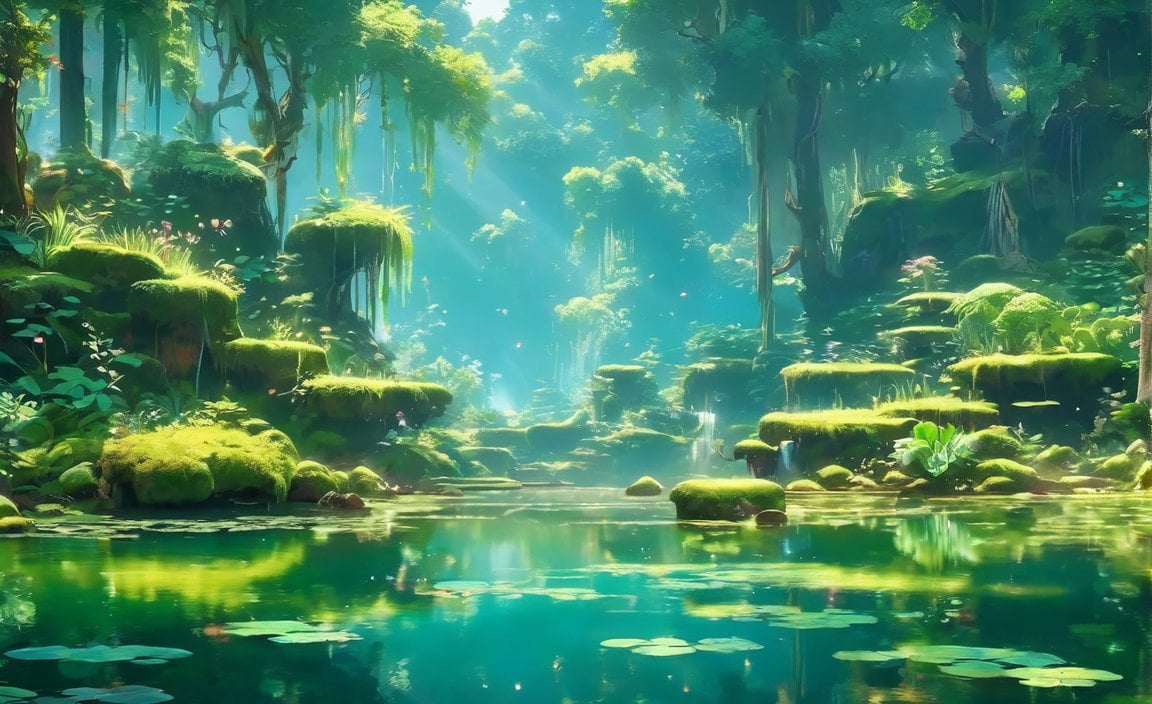
FAQ
Q1: What is the difference between a lake and a pond?
A1: While there are no official or scientific differences between lakes and ponds, the size is relative. Lakes are generally larger and deeper, while ponds are smaller and shallower.
Q2: How are ponds formed?
A2: Ponds can be formed in unique ways, including through natural processes like volcanic craters or the melting of glaciers. They can also be created artificially.
Q3: What types of wildlife can be found in healthy ponds?
A3: Healthy ponds support a diverse range of wildlife, including various plants, animals, and aquatic species. They provide safe havens and essential habitats for many organisms.
Q4: Do ponds last forever?
A4: No, ponds and lakes do not last forever. They can change over time due to natural processes, such as sedimentation and succession, or human activities and interventions.
Q5: What is the historical significance of ponds?
A5: Ponds have their place in history and have been utilized and appreciated by humans throughout time. They have provided valuable resources, such as drinking water and irrigation, and have served as recreational spaces for activities like fishing and boating.
- Muscogee County School District (MCSD) Calendar 2024-2025: Columbus, GA School Dates - November 22, 2024
- Weekend Escape to Millerton, NY: Discover Hudson Valley Charm - November 22, 2024
- Maura Tierney’s Net Worth: From ER to Millions - November 22, 2024
